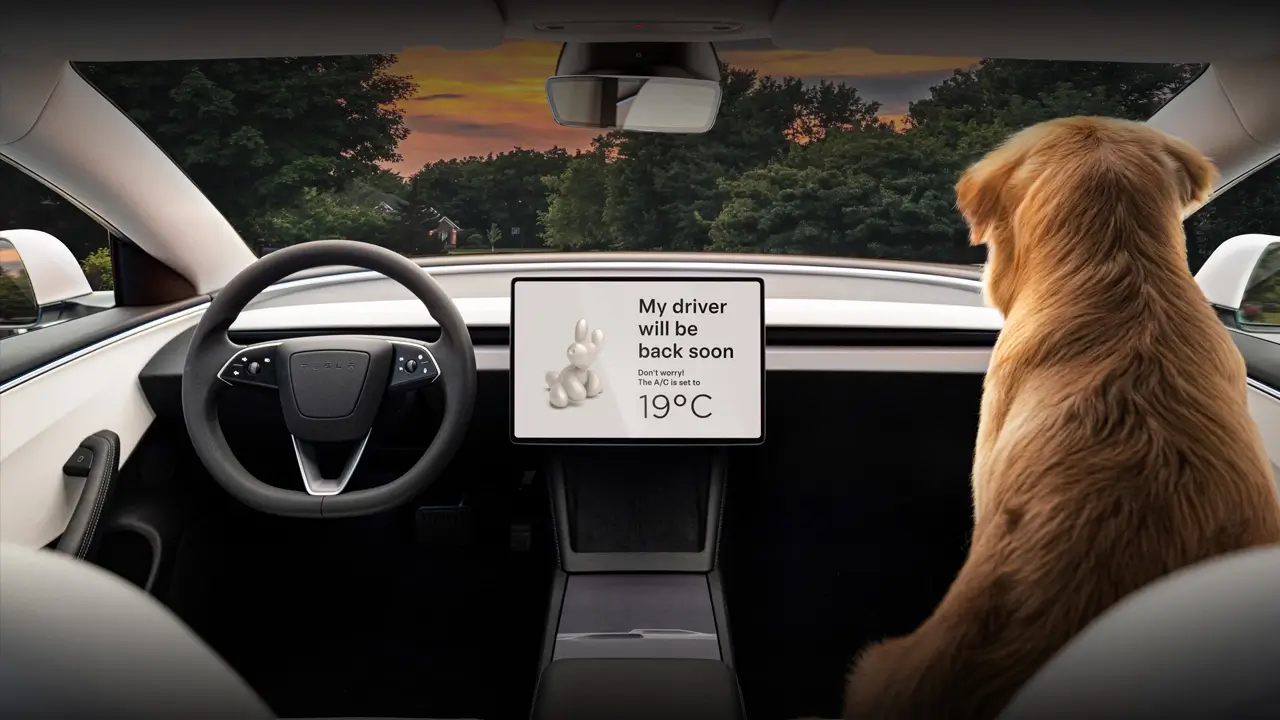Tesla’s Robotaxi Vision
Elon Musk’s Tesla is renowned for pushing the boundaries of automotive technology, and the company’s vision for the future includes fully autonomous robotaxis. While Tesla’s Full Self-Driving (FSD) technology has not yet reached full autonomy, the company is forging ahead with ambitious plans to revolutionize urban transportation. A significant aspect of this vision involves the integration of advanced cleaning systems within these autonomous vehicles, ensuring high standards of hygiene and efficiency. Here’s a detailed look at Tesla’s groundbreaking approach to self-cleaning robotaxis.
The Promise of robotaxis
Elon Musk has promised to unveil Tesla’s long-rumored robotaxi on August 8. However, given Tesla’s history of ambitious timelines, this date should be approached with cautious optimism. The concept of autonomous taxis has the potential to transform urban mobility, offering lower transportation costs and reducing the environmental footprint compared to privately owned vehicles. Yet, the practicalities of maintaining cleanliness in shared, autonomous vehicles pose unique challenges.
The Patent Revelation
On June 30, a tech patent-tracking account on X (formerly Twitter) revealed details from a 67-page patent filing made by Tesla with the World Intellectual Property Organization in February 2023. This patent outlines Tesla’s plans for controlling environmental conditions in enclosed spaces, specifically targeting their future fleet of self-driving electric robotaxis. The filing emphasizes that shared spaces in these vehicles can become unsanitary quickly, and traditional cleaning methods are insufficient.
Tesla’s High-Tech Cleaning Solutions
Tesla’s solution to the sanitation challenge involves a suite of sensors and automated cleaning systems designed to maintain cleanliness without human intervention. Here are the key components of this innovative approach:
1. Sensor Integration: Tesla plans to equip its robotaxis with a combination of image, thermal, acoustic, pressure, radio frequency, gas, and capacitive sensors. These sensors will detect when passengers have exited the vehicle and assess the cleanliness of the interior.
2. Disinfection Methods:
UV Light Blasting: Once the vehicle is empty, UV lights could be used to disinfect surfaces, effectively targeting bacteria and viruses.
Heat Sterilization: Heating plates might raise the internal temperature of the EV to as high as 132 degrees Fahrenheit for up to 30 minutes. This process could kill various pathogens, including COVID-19, though it may not be effective against all bacteria and viruses.
3. Robotic Cleaning Stations: In cases where internal sensors detect significant grime, the robotaxi could autonomously drive to an external cleaning station. There, another robotic system would handle precision cleaning, ensuring thorough sanitation.
4. Adaptive Interior Configurations: The robotaxis could adjust their seat positions to expose hidden areas to the cleaning mechanisms, ensuring that every part of the vehicle is sanitized.

Tesla Robotaxi cars -The Road to Reality
While Tesla’s vision is impressive, several hurdles must be overcome before it can become a reality:
1. Achieving Full Autonomy: Tesla has not yet achieved full self-driving capability. The FSD system still requires human oversight, and transitioning to fully autonomous vehicles is a complex challenge that involves technological, regulatory, and safety considerations.
2. Deploying a Robotaxi Fleet: Tesla’s robotaxis do not yet exist, and developing a fleet of these vehicles will require significant advancements in both hardware and software.
3. Convincing the Public: Public trust in autonomous vehicles is essential for the success of robotaxis. Passengers must feel confident in the safety and reliability of these vehicles, including their ability to maintain high hygiene standards.
4. Safety Concerns: Recent incidents where Tesla owners were locked inside their vehicles due to dead 12V batteries highlight potential risks. Ensuring that passengers can safely exit a robotaxi, even during self-cleaning cycles, is crucial to avoid any unpleasant or dangerous experiences.
- Audi GT50 Concept: A Loud Reminder of Why Car Enthusiasts Fell in Love With Audi
- Nearly 30% of UK Drivers Believe Car Tax Should Be Based on Mileage — Survey
- Why Planes and Boats Escaped the Luxury Tax But Cars Didn’t
- Australia’s Headlight Confusion: Authorities Warn Drivers After Viral $250 Headlight Rule Goes Wild Online
- 2025 Hyundai Venue Facelift Launched in India – Full Details, Variants, and Price
Conclusion
Tesla’s vision of autonomous, self-cleaning robotaxis represents a significant leap forward in automotive technology. By addressing the challenges of cleanliness in shared vehicles with high-tech solutions, Tesla aims to offer a practical and sustainable alternative to traditional transportation. However, realizing this vision will require overcoming substantial technological and public perception hurdles.
As Tesla continues to innovate, the company’s commitment to transforming urban mobility remains clear. The integration of advanced cleaning systems in autonomous vehicles not only underscores Tesla’s dedication to hygiene and passenger safety but also highlights the potential for a future where transportation is both efficient and environmentally friendly.
For now, while the promise of self-cleaning robotaxis remains on the horizon, Tesla’s ongoing advancements keep the dream of a cleaner, more autonomous future alive.
